I’m a never in control of my time!
Sound familiar? This has been a complaint and frustration for nearly every business leader I have worked with. It is not simply a matter of scale either. Time management issues cause the same frustration expressed in small start-ups and in a large business, turning over in excess of £50 million.
I was recently asked to put together a small talk on effective time management and would like to share the contents with you here. This is a huge subject and there are any number of books, talks and resources available. As a fellow small business owner, i’ve listed a couple of points that might change your relationship with time, and six tips that I have found useful in prioritising my own activities.
Note that I have said activities. You don’t manage time; you manage what you do and part of that is deciding when to do it.
What does behavioural science have to do with it?
We all have our strengths and weaknesses, and importantly, it is proven that our performance varies up to 20% depending on the time of day. You will have an idea if you are a ‘morning person’ or a ‘night owl’. How you are can also be affected by age. Anyone with children will know that they tend to be morning people (especially around Christmas!). Teenagers in contrast tend to go nocturnal. As we grow older, we tend back towards the morning again.

Performance variation over time
Despite the fact that we all have different preferred times of the day, the shape of the curve remains relatively the same. First, we climb to a time of peak performance where we are able to focus, achieve and resist distraction. We slowly come down after that to a period of low performance. This is where we find it hard to motivate ourselves and are highly susceptible to distraction. We then have a bit of a recovery where our performance goes up again, although we will not achieve the same level of focus that we had earlier in the day.
Armed with this knowledge, we can have a look at what activities we plan into our day!
At peak time, we can schedule in that ‘on the business’ stuff that requires us to knuckle down, focus and get it done right. It could be your accounts or it could be writing that blog that needs to be done. It could be making that difficult call that you have been putting off!
As we go into the trough, we can now beware that this is the time when we might get distracted. Personally, I find this a great time to exercise – I can switch off my mind and let it wander while I run on the treadmill. For me it can also be a good time to get out and about which will keep me away from the dreaded social media or staring out of the window. What my mentor calls ‘squirrel watching’ – when the activities of the squirrel on the fence are far more interesting than that spreadsheet you’re working on!
Later, as energy levels pick up again, it is often a great time to do some of the more creative thinking and planning. A good time to have conversations with people and plan events.
The point is that you can look for and understand when in your day you are experiencing these peaks and troughs and plan your activities into them to become the most effective you. Without particularly changing yourself and without really changing what you do, you can just use some self-knowledge and a bit of scheduling to create a step-change in your own performance.
So with our new found insight into ourselves, how do we decide what activities to do? Well time to leave Daniel Pink and visit Steven Covey, author of ‘The Seven Habits of Highly Effective People’. The third habit he describes in the book is to ‘Put First Things First’. He introduces the concept of urgency versus importance.
The Time Management Matrix
The time management matrix describes how most of us tend to manage our activity.

Top left quadrant – What occupies our time without question. Very often it consists of things that we really should have addressed before.
Bottom left quadrant – Filled with all of the things that occupy us for most of our time. These are the noisy things that demand our attention, even if they are not important. For example, the crying baby, the ringing phone, the ‘ping’ when an e-mail arrives.
Bottom right quadrant – Where we go to escape the noise. These are the distractions, the Facebook scrolling, the Candy Crush. It is however not always such blatant activities. There are others that I have labelled ‘displacement activity’. This is when we do something that we can pretend is important, but is really a reason for procrastination. It may be cleaning or doing the laundry; some it might be re-writing the ‘to do’ list. Each of us knows in our hearts which activities we use to displace things that we don’t feel like doing.
The top right quadrant – things that are important but not urgent. Very often they are the things that don’t get addressed until they become an emergency or a crisis. Have you ever noticed that people don’t take care of themselves until after the heart attack? They don’t look after their cyber security until after their files have been encrypted by a hacker? They don’t invest in their pensions, or in the value of their business and then find themselves struggling when it comes time to retire.
So how do we take control of this? How do we create the habit of doing the things that truly matter?
Top tips for time management
There is any amount of good advice and time management techniques available. I am going to share with you some things that I am implementing in my own life and business to try and make sure that I put the first things first.
1. Ditch the ‘To Do List’
One of my own mentors is fond of saying that if there are more than ten things on your ‘to do list’, it is actually a ‘wish list’. Instead, write the things you need to do into your diary. Firstly, it means that you have assigned time to the task and you can make sure you put it at a time of day when you will be in the best possible frame of mind to do it! Secondly, if you have an electronic calendar that syncs – your phone/device will give you a ‘ping’ when it is time to do things and create a little urgency for you.
2. Colour Code.
Put all of the things that you need to do into categories and assign them each a colour in your calendar. My categories are:
- Fee earning
- Exploratory activity
- Networking
- Administrative
- Accounting
- Family
3. Go to bed and wake up early.
I have found that the activity that I do from 9pm onwards is almost uniformly lower right quadrant pointless rubbish. Therefore, I’ve taken the decision to give that time to sleep. I now wake up at 5am and assign myself one task (upper right quadrant) to do. Just one. It rarely takes the two hours before the kids get up and the house descends into chaos, but it normally inspires me to get one or two other things done while I’m in that frame of mind. That’s five ‘on the business’ things done each week. It is also effectively another working day in the week, and probably the most productive one! What’s more, at the other end of the day, it is much easier to make sure the laptop closes at 6pm sharp and it is family time from then!
4. Think in minutes and not hours.
I have always been someone that breaks the day down into ‘chunks’ to be allocated to doing things. The easiest is the hour. I had no idea of how wasteful that can be. The problem is that I begin to discount small amounts of time in between. Example: I have to pick up the kids from school at 3pm. It is a 15-minute drive so I need to leave at around 2.40pm. It is now 2.25pm, so what do I do? I kill time. I think, “Well, I have to leave soon, so it’s pointless starting anything!” How do I kill time? You got it – I move to the lower right quadrant again, a bit of Facebook scrolling perhaps…How many times do we do this every day?
If I do this four times, that is an hour of potential productive activity that I have killed. What if I thought instead “I have 15 minutes, who can I call?” Or “What issue can i address or relationship can strengthen? If we can make a habit of always seeking to do something productive with the small chunks of time that we routinely waste – we can very likely carve another half working day into our week without changing our level of effort.
5. Schedule your communication effectively.
We have seen from the examples above that studies have shown communication and performance results vary according to the time of day. Why not ensure that we schedule our most difficult and challenging communications tasks for when we are at our most motivated and prepared? If your communications are scheduled in your colour coded electronic calendar, you will get the automatic reminder to create some urgency and will have assembled the information (and motivation) to make sure that you will achieve the best possible outcome.
6. Make a ‘Have done’ list.
This is not necessarily a list per-se, but a chance to reflect upon what you have achieved during your day. This is your chance to hold yourself to account but to be kind to yourself also. Sometimes we feel that we have achieved nothing that day – doing this will help you realise what you actually have done and that you have actually achieved. We can also see where we have strayed from the path, or acted outside of our values and then resolve to do it better next time.
Tony Robbins in his book ‘The Compound Effect’ recommends ‘book ending’ your day i.e. putting some time into going over the day ahead in the morning, and reflecting on the day in the evening. It is a little ritual that allows you to make a clean break from work and focus on other things. The ‘have done’ list is a great way to end the day.
I hope that these have either helped or at least led you on a train of thought that will help you become more productive with your time management.
For more information, get in touch or to book a free Business Health Check click here.




